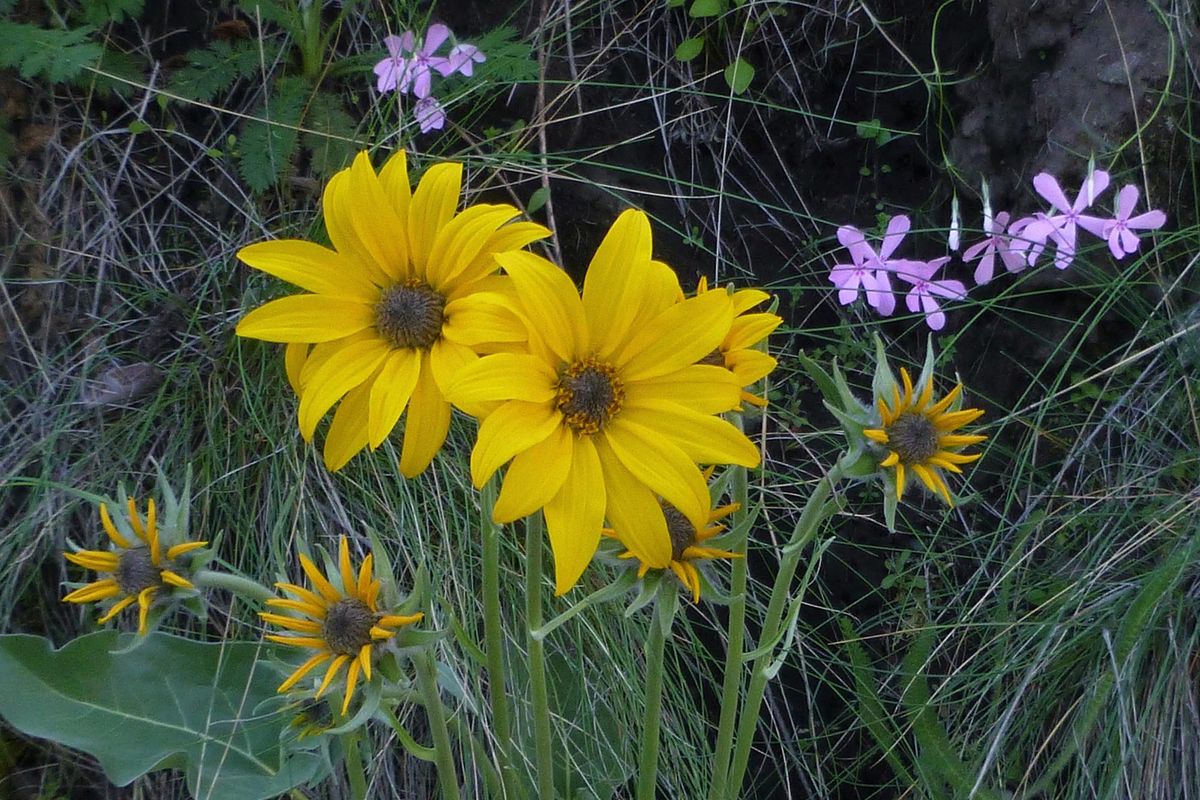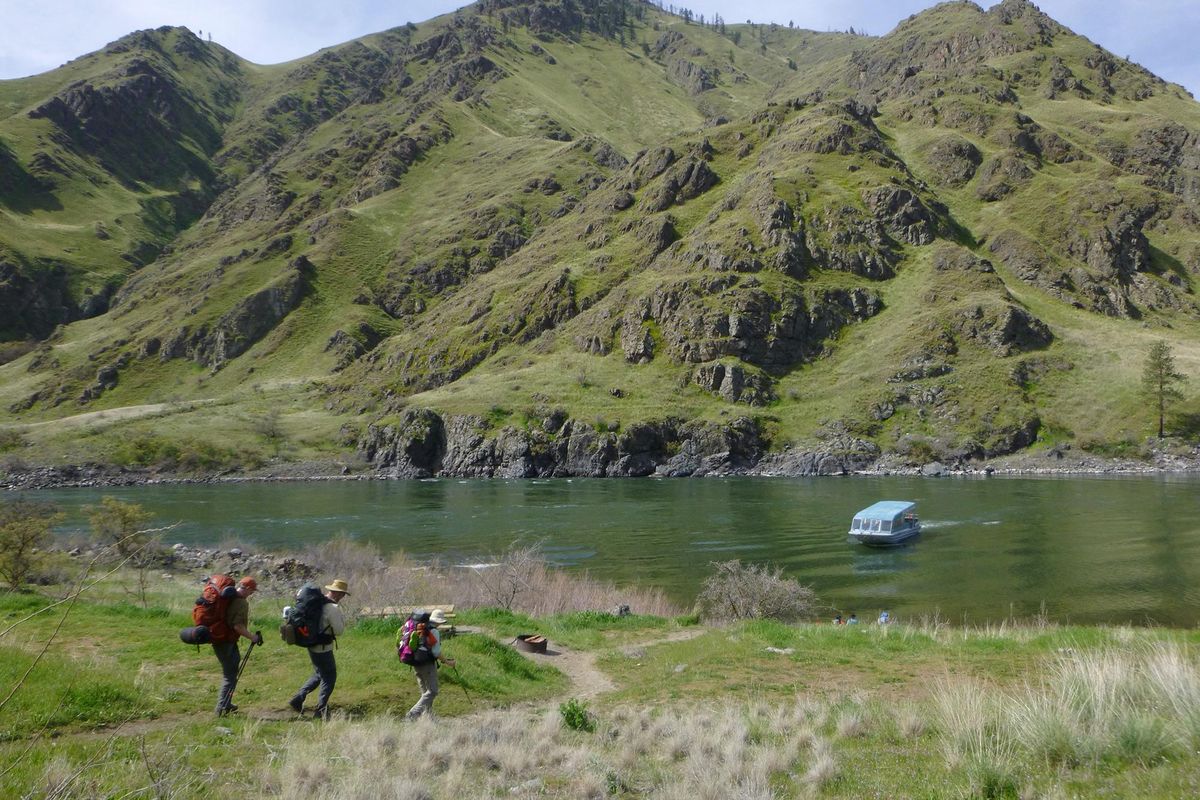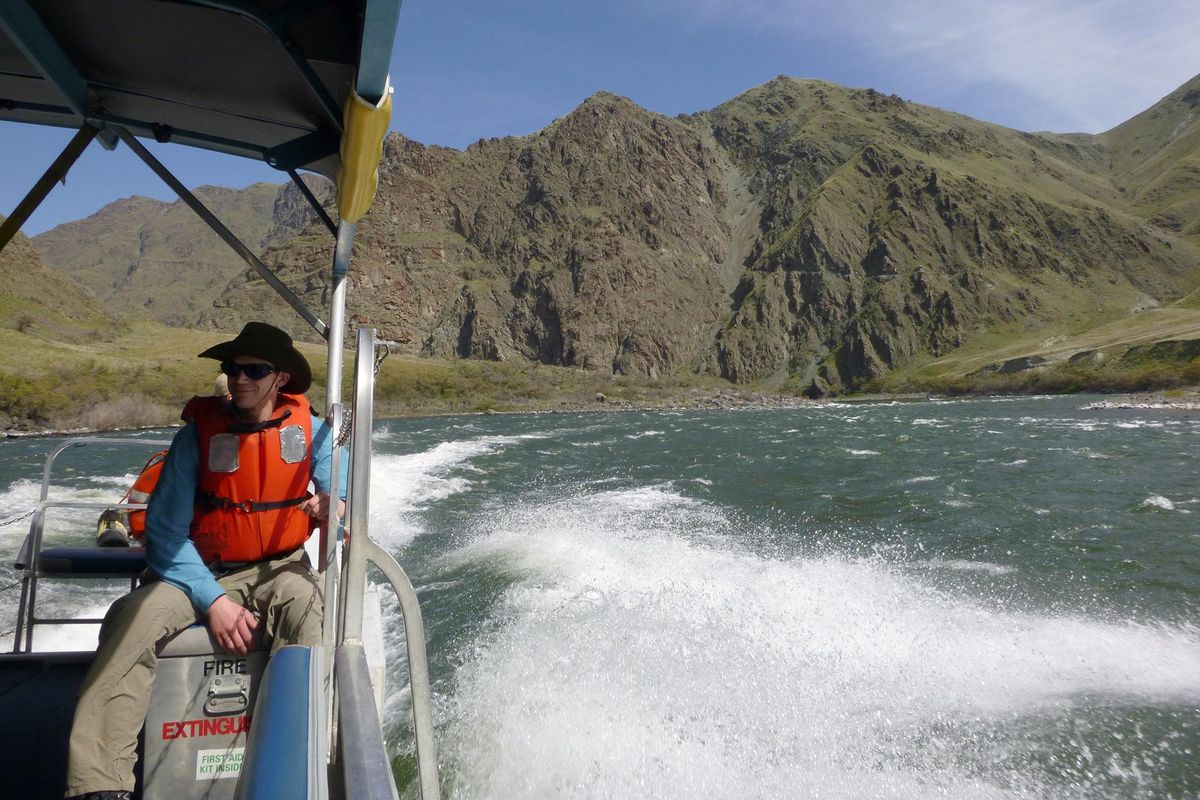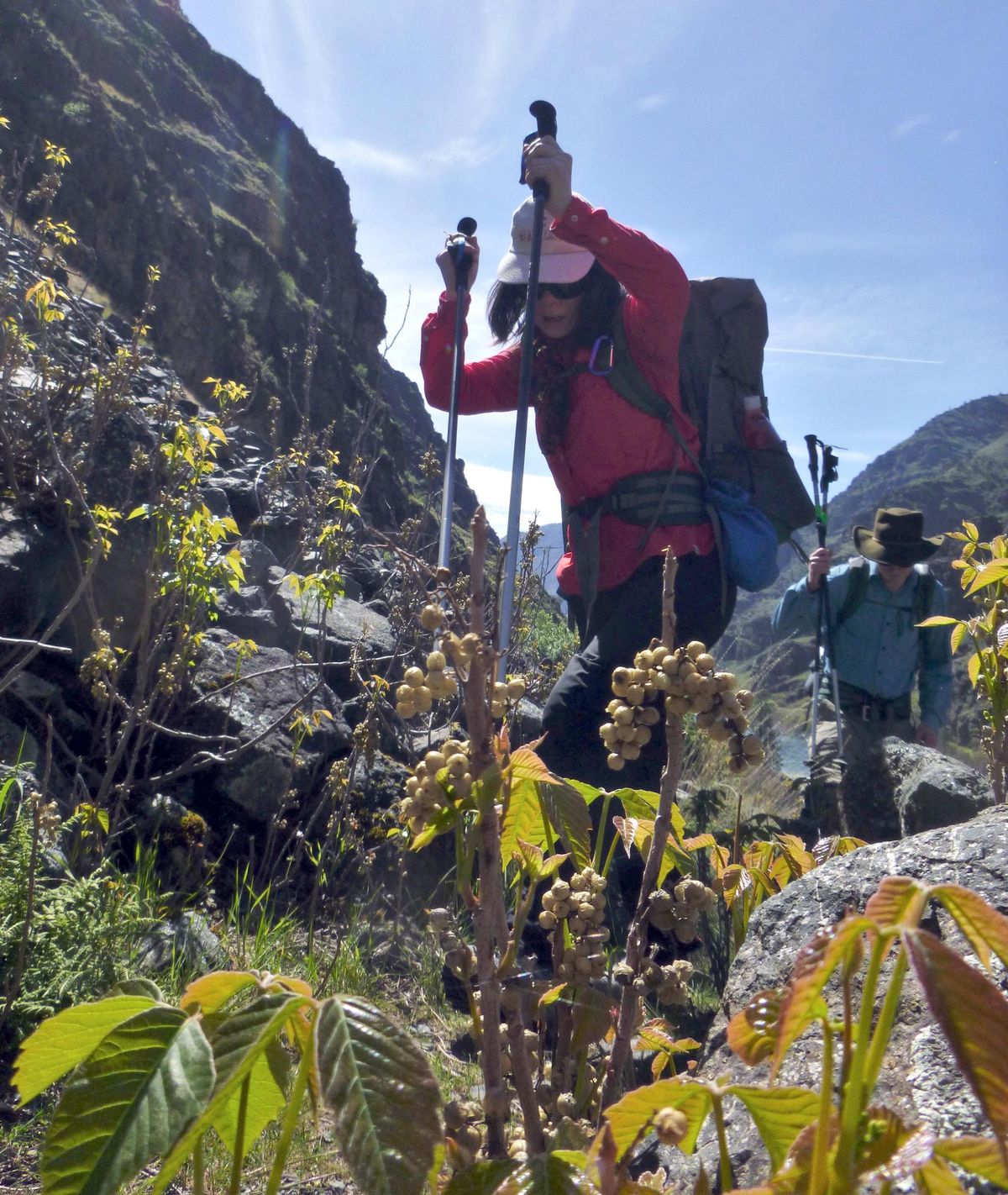Prime time for Snake River trek through Hells Canyon
A Hells Canyon jet boat operator motors to Upper Pittsburg Landing to shuttle Spokane Mountaineers backpackers up the Snake River. RICH LANDERS richl@spokesman.com (Rich Landers / The Spokesman-Review)Buy a print of this photo
Hells Canyon can be heavenly during spring, when wildflowers are blooming, poison ivy is leafing out, canyon wrens are singing and rattlesnakes are getting frisky.
The Spokane Mountaineers zero in on trails along this protected stretch of the Snake River in March and April. With snow smothering the mountains above the deep canyon separating Oregon and Idaho, cacti-bordered trails beckon early-season backpackers to the river.
Joining a group allows cost-sharing benefits of hiring a jetboat service for an $800 upstream shuttle into a roadless reach of Hells Canyon National Recreation Area. Ten hikers pay $80 apiece.
Among the choice hiking options is Snake River Trail 102 on the Idaho side of the river downstream from Hells Canyon Dam.
The trail, as it’s managed today, runs above the river 28 miles from Granite Creek to the Snake River trailhead at Pittsburg Landing. The trailhead is accessible by road 19 miles from U.S. 95 at White Bird, Idaho.
Part of the attraction to a shuttle is an hourlong tour up through the canyon for a snapshot of sights that will be absorbed in more detail during the next three or four days of hiking back to the Upper Pittsburg Landing trailhead.
The upstream shuttle concludes with a splashy ascent of Granite Creek Rapid, rated Class IV. Experienced pilots run the boulder-studded whitewater easily, but it’s a proven big-boat swamper in the case of a mistake.
Above the rapid, backpackers are unceremoniously deposited on a beach of basalt rubble, where they don packs and begin hiking downstream.
Hells Canyon National Recreation Area is managed by the Wallowa-Whitman National Forest. Trail 102 is managed by the offices in Clarkston, Washington, and Riggins, Idaho.
A similar river trail on the Oregon side of the Snake is managed out of the Wallowa office in Joseph. The Oregon trail is managed to a lesser quality and gets less use because of more difficult access.
Hells Canyon was designated a national recreation area in 1975 and the Snake River corridor was declared a wild and scenic river. Traditional uses, such as homesteading and jetboating, led to a mixed bag of rules.
Powerboats still run the river and motorized equipment is used at some of the historic homestead sites. But campfires are restricted and even Forest Service trail crews can’t use chainsaws. Beach fires must be made in a fire pan. Cutting trees, branches or using driftwood for fires is prohibited.
Boaters who come up the river and want a campfire bring charcoal or their own firewood.
Boaters are required to have a portable toilet, while the cat-hole method is still allowed for backpackers.
With trail maintenance budgets down about 50 percent in the past eight years, the national forests are relying heavily on volunteers for trail work. Hells Canyon is no exception, said Mike Ball, Forest Service river ranger for Hells Canyon.
“The upper 7 miles or so of Trail 102 from Granite Creek up to Brush Creek haven’t been maintained in about 20 years since the Granite Creek bridge blew out in a flash flood,” Ball said. “We haven’t had the dollars to replace it.”
Vertical bluffs on the Idaho side prevent the trail from being extended upstream to Hells Canyon Dam, he said.
Trail maintenance volunteers can shore up rock walls and clear brush, but they can’t deal with the poison ivy.
The rash-causing vines carpet the slopes of many rivers. But in Hells Canyon, poison ivy thrives in groves. Tall, woody stems and white berries can deliver a itchy-to-painful dose of resin even before the “leaves of three” sprout in April.
“It’s listed as a native variety in the area so we can’t treat it,” Ball said, noting that a revised environmental assessment is being written that might allow poison ivy control.
Few evergreen trees are found along Trail 102 and little downfall sawing is required. The bigger maintenance issues are rock slides and stone retaining walls that hold the pathway on vertical cliffs.
“It’s specialized work,” Ball said.
Trails in the major drainages leading down to the Snake River were pioneered by Native Americans and more conspicuously by homesteaders and miners in the late 1800s. Domestic sheep did much of the trail-making, Ball said.
Temperance Creek Ranch, once the largest sheep grower in the canyon, is owned by the Forest Service and leased to an outfitter for hunting, fishing and other recreation.
“We purchased the old ranches and have tried to preserve the culture as much as we can,” Ball said.
Sheep Creek Ranch buildings also are leased to an outfitter, but hikers on Trail 102 can camp at the ranch site.
Kirkwood Living History Ranch and museum is a popular trail attraction. Ranch buildings with artifacts dating back to the 1800s are staffed by volunteers year-round.
The busiest section of the river trail is the 5.5 miles from Upper Pittsburg Landing to Kirkwood Ranch. Spring break – the last week of March and first two weeks of April – is especially busy. The stretch is easily accessible and scenic. The campground at Kirkwood is broad and grassy, complete with picnic tables and flush toilets. But hikers still must purify creek water for consumption.
The canyon gets about 40,000 visitors a year, Ball said, with use spread through the four seasons.
Fishermen head up the river year-round for the various runs of salmon, steelhead and resident smallmouth bass and sturgeon. Hunters move into the area heavily in fall.
Spring is prime for hiking. “It’s the greenest time of the year in the canyon,” Ball said.
Spokane Mountaineers hiking Trail 102 last week found Hells Canyon blooming with yellow arrowleaf balsamroot and pink Snake River phlox.
Heading downstream from Granite Creek, they found campsites ranging from spacious to intimate at Bernard Creek, Bill’s Creek, Johnson Bar, Sheep Creek, Pine Bar, Hutton Gulch and McCormick Ranch.
They hiked through hackberry groves and an unusual few hundred yards of ponderosas near the river at Pine Bar.
The backpackers saw a king snake, rattlesnake, coyotes and mule deer among other critters along the trail. About 50 elk lounged and grazed in one spot across the river, but one elk carcass was within sniffing range of the trail unmolested by predators or scavengers. Apparently the elk had died in a fall from the trail, a reminder that this is steep, unforgiving country.
The most obvious wild residents are the chukars that wake campers long before daylight each morning with their chuck-chuck-chucking calls. The partridge also startle hikers on the trail as they flush like feathered rockets from the hillsides. In April, most of the chukars are in pairs for breeding.
A great horned owl nest was occupied by a parent and two fluffy white chicks. Numerous Canada geese were pairing up.
Suicide Point, 2 miles upstream from Kirkwood, is one of the most scenic spots on the trail. It’s named for a Native American legend of lovers from different tribes who leaped off the 400-foot cliff together when their relationship was ruled taboo.
Carved out of the cliff face, the stretch to Suicide Point is one of only three notable climbs in the 28 miles of the Snake River Trail – a small price to pay for another stunning view of Hells Canyon.






















